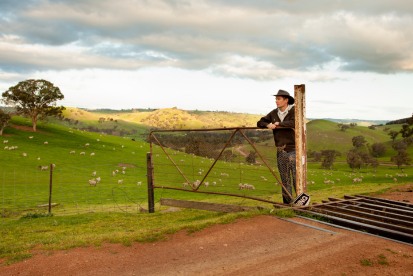Farming has always been a wealth-intensive business. To farm, you usually need to be born into a farming family with assets to operate the farm and expand by borrowing money to buy additional land. This asset-heavy nature of farming has prevailed from generation to generation.
But what if a different model existed for farming that allowed you to have an agribusiness without having inherited or built a strong wealth cornerstone first? What if agriculture was not the asset-dominated industry that it is?
In our interview with Mathew Dart of the DB group, he reveals how this has been made possible with their Alternative Family Farming Model. He also explains how this model makes succession easier and more successful than traditional models, gives flexibility to business financing, and helps find and retain the right people.
What is the alternative family farming model?
It is a shared equity model that separates the asset and income streams of farming. It splits the farm into two; the farm business and the farmland and assets business. E.g., separating the cropping side of the farm into one business and the ownership of the land and machinery into another business.
This, in turn, makes it easier for everyone to get what they want. For example, in a farming family with two or three siblings, the entire family could own the farm asset base and profit from that as they decide. However, the asset base is leased to the farm business that one of the siblings might run. In contrast, the strong balance sheet helps leverage another business in town for the other sibling who does not want to farm.
Paving the path for seamless succession
Mathew admitted that the DB Group existed because of the succession issues he witnessed in his own family.
His parents never faced any succession problems as the older generation handed over control by default when they passed away. However, circumstances were very different for Mathew and his brother. They witnessed their family farming partnership come undone in the 1990s. Moreover, with no prior experience, no one knew the proper process for succession, and there was a lot of stress. Several questions were raised, like "who owns and controls the equipment? and who's in charge of the business?"
These challenges, coupled with his experience while working outside the agriculture industry, inspired Mathew to do things differently. That is when he, along with his friend Dave Burcham, came up with the alternate family farming model that solves the succession problem by separating the income and asset streams intertwined in the traditional model.
Bringing flexibility in business financing
Unlike traditional farm investment, the alternative family model provides flexibility in how you can bring finance into the business via different investment options.
For example, you could lease more land by seeking an investor who wants to own farmland for capital growth but does not want to take on the risk of farming. On the other hand, you could approach investors with an appetite for higher returns with higher risks for investing in the operational side of the business.
Securing and retaining the right people for a more profitable business
The conventional farming model prevents many good farmers and people with valuable skill sets from entering the industry due to its asset-heavy nature. However, the alternative family farming model changes farming from traditional production-based to intellectual property-based. Thereby helping secure and retain the right talent through equity ownership in the business.
On the one hand, it's a lot easier and cheaper for the business as the employee is not taking any ownership over the assets but just becoming a partial owner of the operating business. On the other hand, all employees get the opportunity to grow and expand in the industry by buying equity, making it a win-win for the business and its employees.
The equity model also helps build trust, which is essential in farming that requires making many subjective decisions. Getting employees invested in the business encourages them to act for the best return on equity space, not the maximum yield space. This helps make the business more viable and profitable overall.
Looking toward the future
With the volatile market, wealthy investors are looking for higher-risk activities to allow higher returns. This brings the private equity market to the forefront of available capital. However, a suitable investment largely depends on the farm's financial potential. Features within specialist farm budgeting applications like Agrimaster, such as multi-year cash flow forecasting and budgeting, and granular-level, detailed reports, allow for easy demonstration of the long-term viability and profitability of the business.
Ultimately, the alternative family farming model empowers people to build and expand their agribusiness by harnessing capital outside their balance sheet. This, in turn, allows farming to become more knowledge-driven rather than wealth-driven, opening new areas for talent, innovation, and continued growth of the ag industry.





